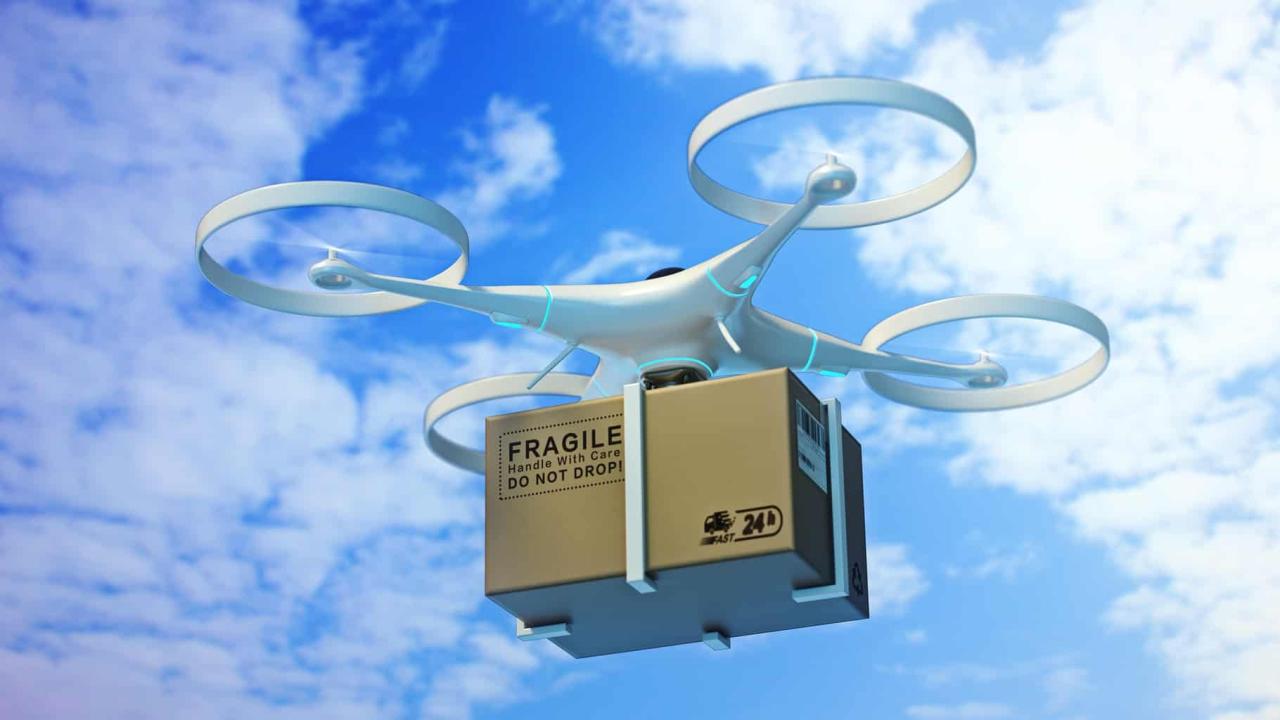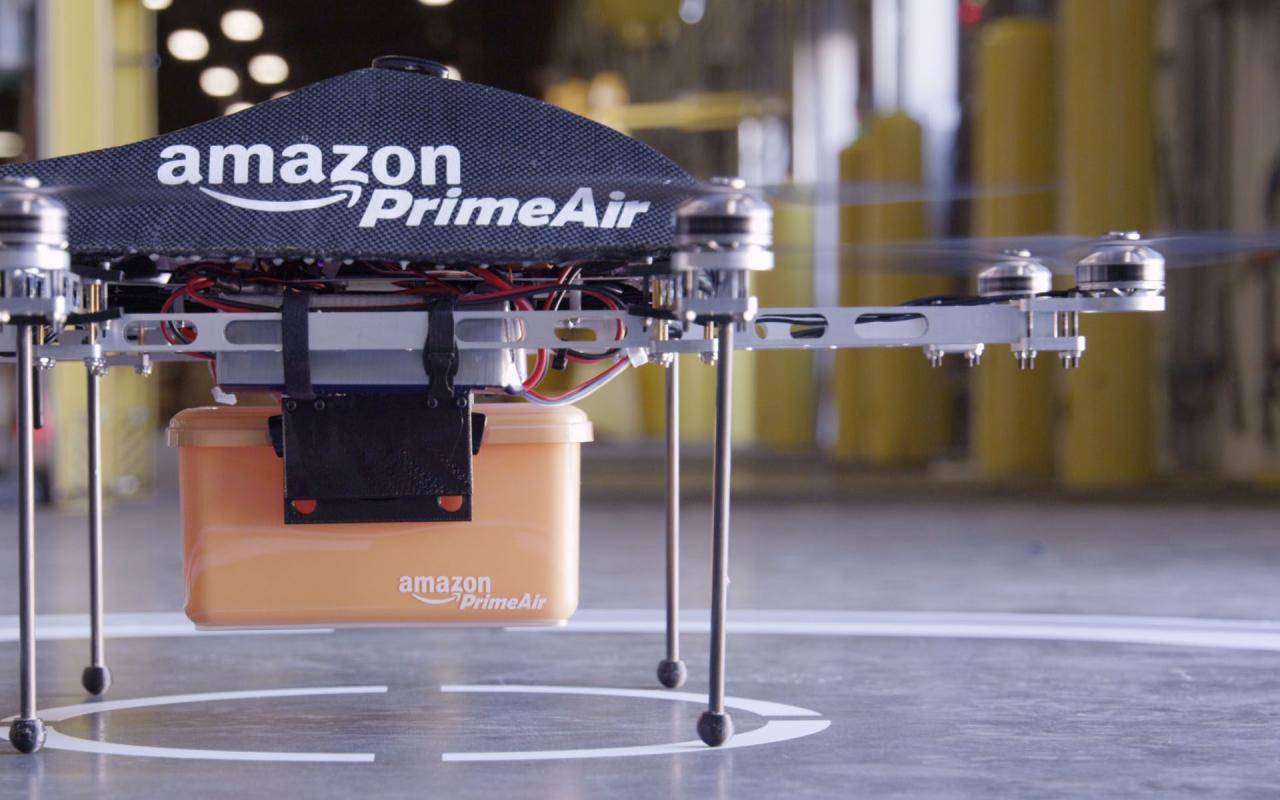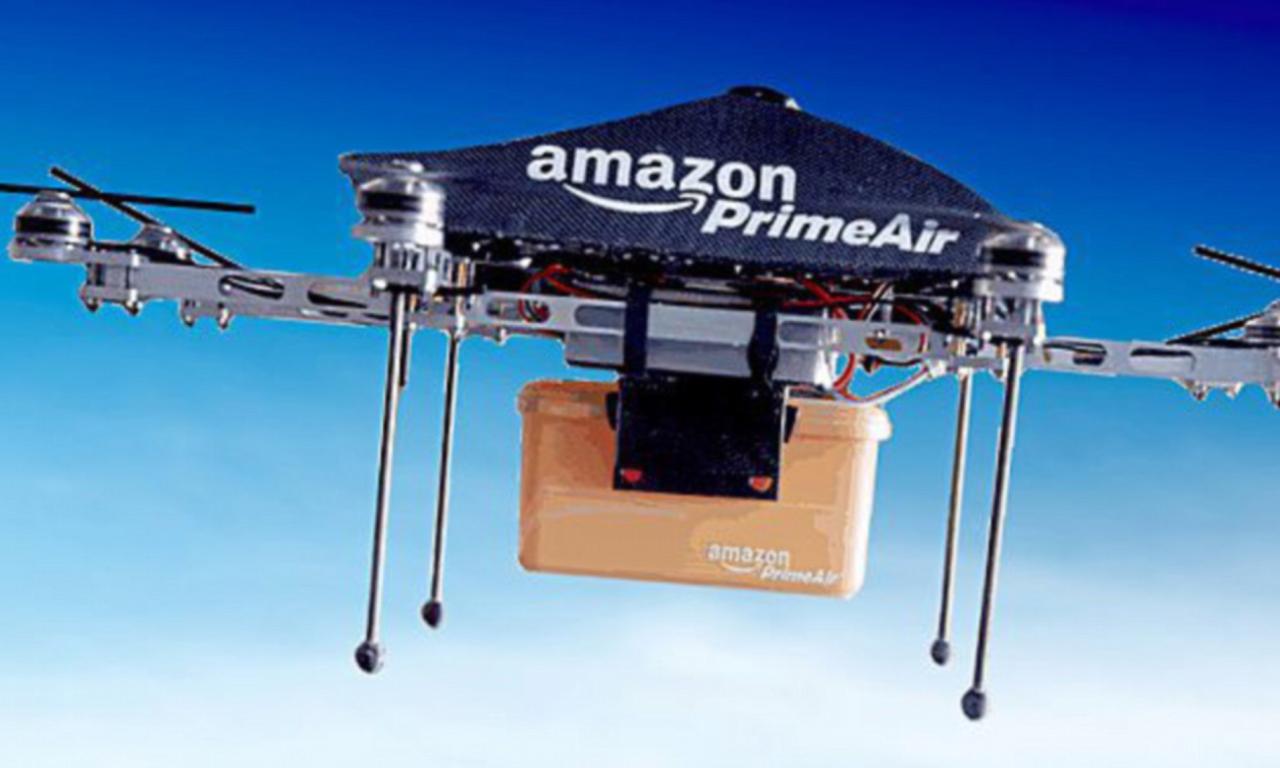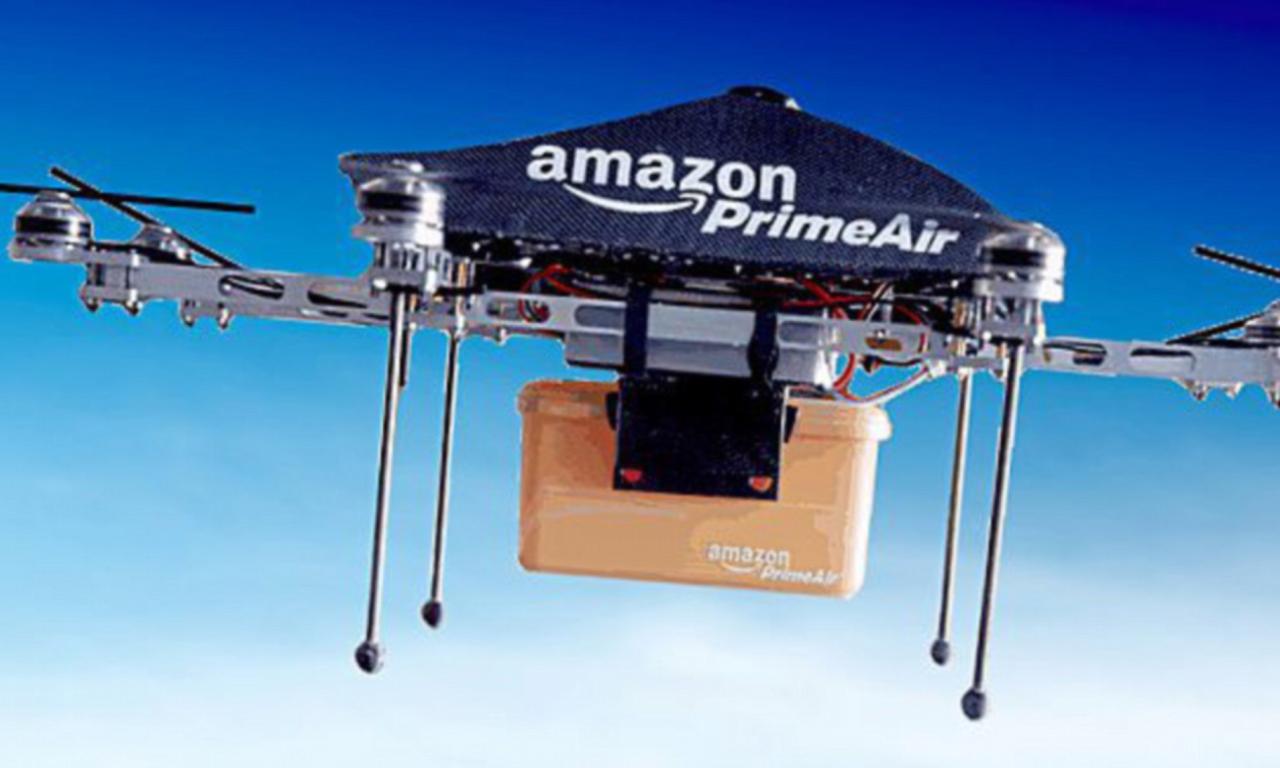Amazon drone delivery locations are rapidly expanding, revolutionizing how we receive packages. This isn’t just about faster delivery; it’s about exploring new logistical possibilities, navigating complex regulations, and shaping the future of e-commerce. We’ll delve into the current state of Amazon’s drone delivery program, examining the factors that determine where drones can fly, the safety measures in place, and what the future holds for this innovative technology.
This exploration will cover everything from the technology itself to the customer experience and the environmental impact.
We’ll look at the key logistical hurdles, including airspace regulations, internet connectivity needs, and population density. We’ll also explore the differences between urban and rural delivery, highlighting the unique challenges each presents. Understanding these aspects is crucial to grasping the potential and limitations of drone delivery.
Amazon Drone Delivery Program: Current Status and Future Outlook: Amazon Drone Delivery Locations
Amazon’s drone delivery program, Amazon Prime Air, represents a significant advancement in last-mile delivery. This article explores the current state of the program, focusing on its geographical reach, operational aspects, safety regulations, customer experience, future expansion plans, and environmental impact.
Current Amazon Drone Delivery Program Status

Amazon Prime Air’s current operational scope is limited, primarily focusing on specific regions within the United States. The program’s technological infrastructure and regulatory hurdles significantly impact its geographical expansion.
Currently, only select items that meet weight and size restrictions are eligible for drone delivery. These typically include smaller packages containing everyday items. The program utilizes a sophisticated network of drone delivery hubs, equipped with advanced flight control systems and automated package handling technologies. This system requires robust communication networks and precise GPS technology for safe and efficient drone operation.
Key milestones in the development of Amazon Prime Air include initial test flights, successful deliveries in controlled environments, and gradual expansion to limited customer bases in select locations. The program continues to evolve, with ongoing improvements to drone technology, software, and operational procedures.
So you’re curious about where Amazon’s drone deliveries are headed? They’re expanding rapidly, testing different locations and logistics. To get a better understanding of the technology behind these deliveries, check out the advanced drone systems from sky elements drones ; their innovations could easily shape the future of Amazon’s drone delivery network. Ultimately, figuring out those Amazon drone delivery locations involves understanding the tech driving it all.
Factors Influencing Location Selection for Drone Delivery
Several crucial logistical factors determine the suitability of a location for drone delivery. Population density, infrastructure, and regulatory compliance all play a significant role in Amazon’s site selection process.
High population density areas offer a large potential customer base, but present challenges related to airspace management and regulatory approvals. Areas with robust internet connectivity and supportive airspace regulations are preferred to ensure seamless drone operations. Urban environments face complexities like building density and air traffic, while rural areas present challenges related to infrastructure and population distribution. Amazon prioritizes locations where the benefits outweigh the operational complexities.
Safety and Regulatory Aspects of Drone Delivery Locations, Amazon drone delivery locations
Rigorous safety protocols are crucial for Amazon’s drone delivery operations. These protocols address potential risks throughout the entire delivery process, from takeoff and flight to landing and package retrieval. Adherence to strict safety standards is paramount to ensure public safety and regulatory compliance.
Drone flights are governed by varying regulations across different jurisdictions. Amazon must secure the necessary permits and approvals from relevant aviation authorities before initiating drone delivery operations in any given location. This involves comprehensive risk assessments, flight planning, and demonstrating adherence to safety standards.
| Regulation Type | Description | Location Impact | Amazon’s Approach |
|---|---|---|---|
| Airspace Restrictions | Limitations on flight altitudes and routes | Limits delivery zones | Careful flight planning and route optimization |
| Visual Line of Sight (VLOS) Requirements | Requirement for visual observation of the drone | Restricts delivery range | Utilizing advanced sensor technology and remote monitoring |
| Emergency Procedures | Protocols for handling unexpected events | Influences operational design | Robust contingency planning and emergency response mechanisms |
| Data Privacy Regulations | Rules governing the collection and use of flight data | Impacts data handling procedures | Compliance with relevant data protection laws |
Customer Experience and Drone Delivery Locations

A seamless and informative customer experience is critical for the success of Amazon’s drone delivery program. Amazon employs various strategies to enhance customer interaction and address potential concerns.
A user-friendly interface allows customers to track their drone delivery in real-time, providing updates on the drone’s location and estimated delivery time. Proactive communication strategies inform customers about drone delivery options and address any queries or concerns. Positive customer experiences are documented and shared to build trust and confidence in the service.
- Potential Customer Concerns: Noise pollution, safety concerns, package security.
- Amazon’s Responses: Utilizing quieter drones, implementing robust security measures, providing transparent communication.
Future Expansion of Amazon Drone Delivery Locations

Future expansion of Amazon Prime Air will be influenced by advancements in drone technology, regulatory changes, and evolving customer demands. Technological improvements, such as autonomous flight capabilities and increased payload capacity, will expand the potential delivery areas.
Amazon’s expanding drone delivery network is aiming for more locations, but safety is key. This reminds us of a recent incident, check out this report on a drone show crash , highlighting the importance of robust safety protocols. Such incidents underscore the need for thorough testing and regulations before widespread drone delivery becomes a reality in even more places.
Autonomous drone technology will significantly enhance the accessibility of remote and underserved areas. Improved battery technology and more efficient drone designs will increase delivery range and reduce operational costs. Regulatory frameworks will continue to evolve, enabling broader deployment of drone delivery services.
A hypothetical future map might show expanded coverage in suburban and rural areas, with denser networks in urban centers, potentially including dedicated drone delivery corridors above highways or less congested airspace.
Environmental Impact of Amazon Drone Delivery
Amazon’s drone delivery program presents both environmental benefits and drawbacks. The environmental impact is a critical consideration in its ongoing development and expansion.
Drone delivery can reduce carbon emissions compared to traditional delivery methods, particularly for short-distance deliveries. However, the manufacturing and disposal of drones, as well as their energy consumption, contribute to the overall environmental footprint. Amazon is actively exploring strategies to minimize its environmental impact, including using sustainable materials and optimizing flight routes.
- Drone Delivery: Lower emissions per delivery for short distances.
- Traditional Truck Delivery: Higher emissions, especially for individual deliveries.
- Electric Vehicle Delivery: Lower emissions than trucks, but still higher than drones for short distances.
Examples of environmentally friendly technologies used include the use of electric motors in drones and the exploration of alternative fuels for drone operations.
Outcome Summary
Amazon’s drone delivery program is more than just a futuristic concept; it’s a rapidly evolving system with significant implications for logistics, technology, and the environment. While challenges remain in expanding its reach and addressing safety concerns, the potential benefits – faster delivery, reduced emissions, and enhanced customer experience – are undeniable. As technology advances and regulations adapt, we can expect to see Amazon drone delivery become an increasingly common sight in more locations worldwide.
So, Amazon’s planning drone delivery in several locations, aiming for super-fast shipping. But safety’s key, right? Recent news, like this report on a drone crash in Paris , highlights the importance of reliable drone technology. That incident underscores the need for robust safety measures before widespread Amazon drone delivery becomes a reality.
The future of package delivery is taking flight.
Detailed FAQs
How long does Amazon drone delivery take?
Delivery times vary depending on distance and other factors, but are generally much faster than traditional delivery methods.
What if my drone delivery is damaged?
Amazon has standard return and replacement policies that apply to drone deliveries, similar to ground deliveries. Contact customer service for assistance.
Are there weight restrictions for drone deliveries?
Yes, there are weight and size limits on packages eligible for drone delivery. These limits are designed for safety and efficiency.
How much does Amazon drone delivery cost?
The cost is typically the same as standard shipping, but may vary depending on location and package details. Check at checkout.
